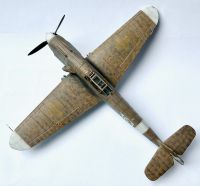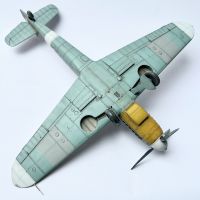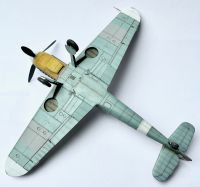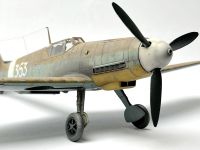Hasegawa 1/32 Bf 109F
By Bogdan Zajączkowski
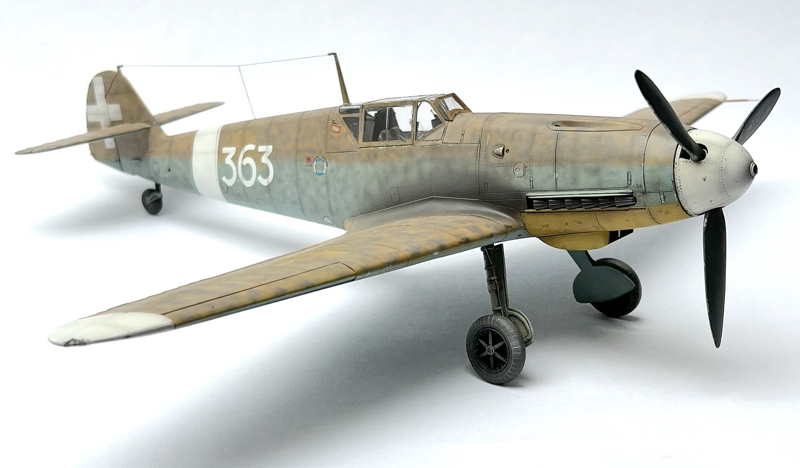
The Regia Aeronautica received 15 Bf109F-4 models. Deliveries began on April 19, 1943. The planes were older machines built in 1941. All of them were assigned to 363a Squadriglia, 150o Gruppo Autonomo based at Sciacca, Sicily in May-June 1943 (this unit was also equipped with the Bf.109G) and were used primarily for training.
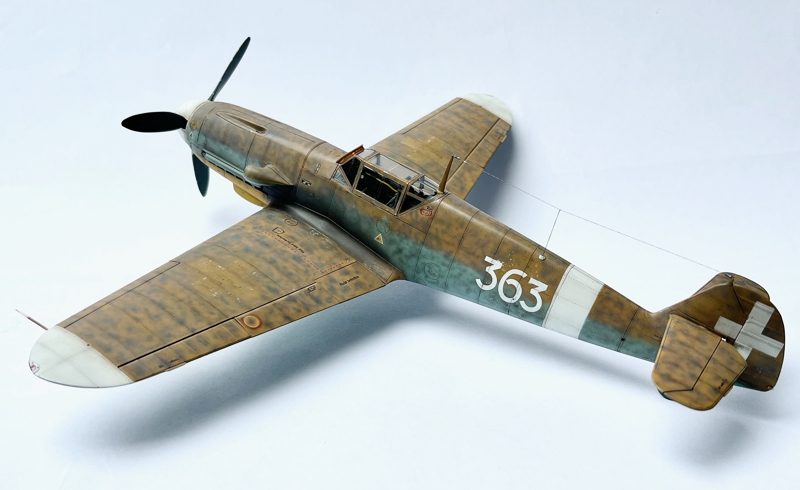
The Hasegawa 1/32 Messerschmitt Bf-109F-4 is known to most in this scale. A well-designed, simple-to-build model. I have built this model basically out of the box. The only changes were: riveting of all surfaces with Rosie the Riveter tool, a pilot's seat from Quickboost and landing gear wheel wells from Aires.
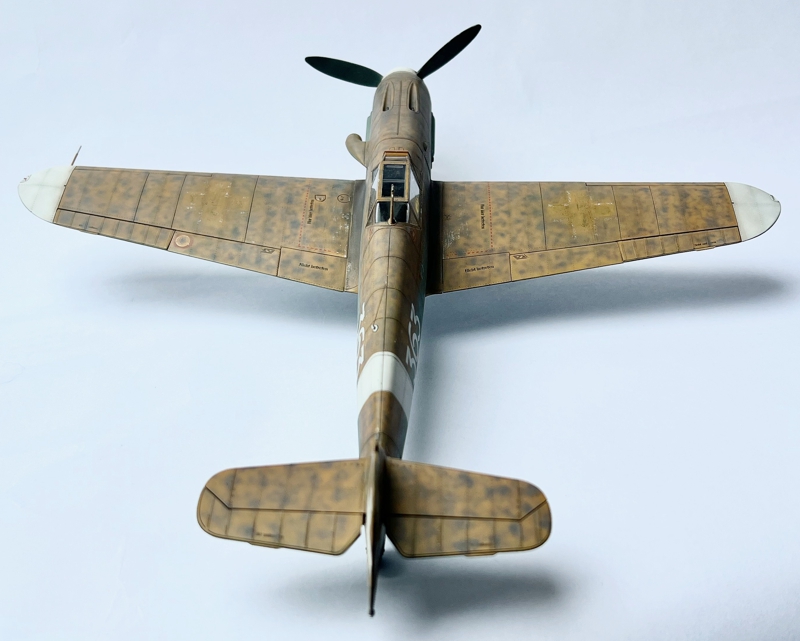
I spent most of the time painting the kit. The whole kit was primed with Mr.Finishing Surfacer 1500 Black for the black basing technique. On such prepared surfaces I sprayed standard Luftwaffe desert camouflage RLM 79 / RLM 78.
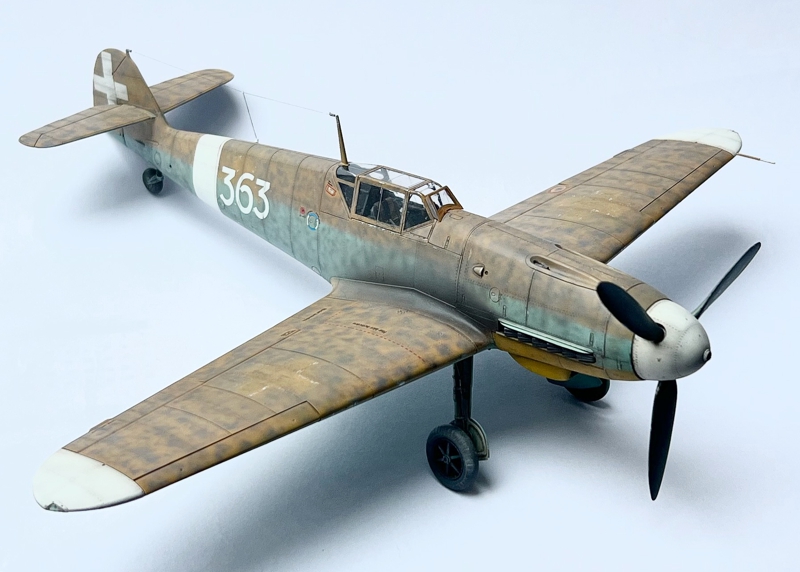
I decided to build a Bf-109F-4 from 363 Squadriglia 150o Gruppo Autonomo at the Sciacca airfield in Sicily in June - July 1943. In the book "Ali Straniere in Italia No1 Messerschmitt Bf-109" there are 4 photos of (probably) this aircraft - none of them provide 100% sufficient reference to completely recreate the camouflage of this aircraft. The result of my analysis was as follows: the standard Luftwaffe desert camouflage was sprayed with gray spots / squiggles - at least that's what the analysis of the only available color photo showed. The camouflage was almost certainly of German origin, applied in field conditions. There are a lot of photos of Bf-109F and Bf-109G-2 in such non-regulation squiggles. The logical choice was therefore to use RLM 75. In various internet profiles of Friedrich from 353o Gruppo Grigio Azzurro Chiaro is usually suggested - but it does not match the photo, it's too light, too grey. Besides, it's rather unlikely that at that time so much effort would be wasted on "fancy" painting of a machine used mainly for training.
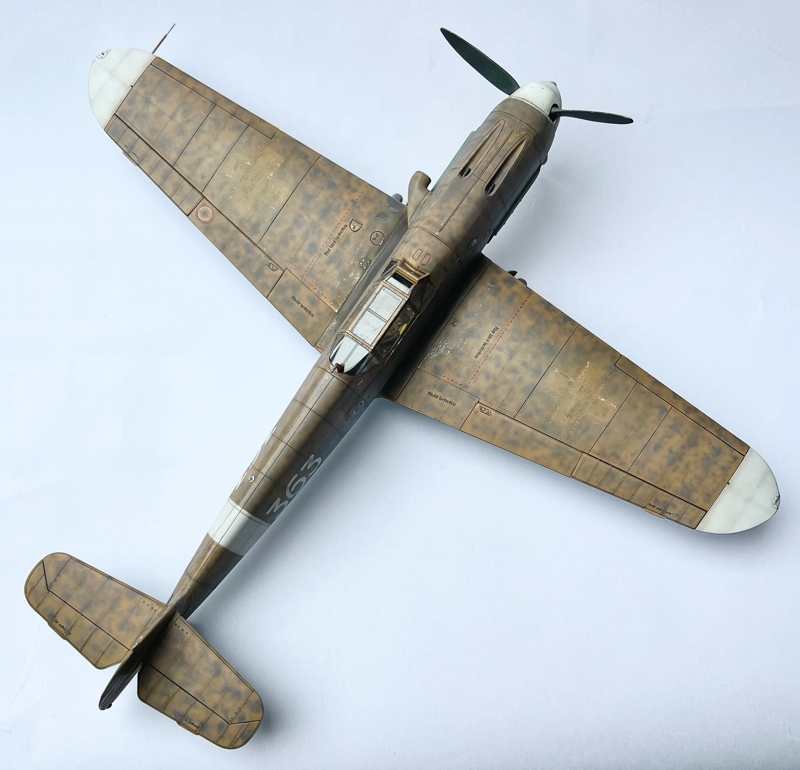
I've airbrushed the camouflage freehand using a Harder & Steenbeck Infinity airbrush with a 0.15 nozzle at very low pressure using MRP paint RLM 75. It turned out to be very easy - to my surprise. Another problem concerned German crosses - or rather traces of them. And again - most sources suggest overpainting the crosses with GAC1 - that's what I did at first but looking at the photos - it's hard to see traces of such overpainting. Probably the German markings were scratched / washed off by Italian mechanics. Well - I did the same with my kit. I sanded off the gray paint with 2000 water sandpaper and corrected my work with RLM 79. Next using sponge and vinyl masks I applied delicate traces of white paint in the places where the German crosses were before. The result is quite satisfactory to me.
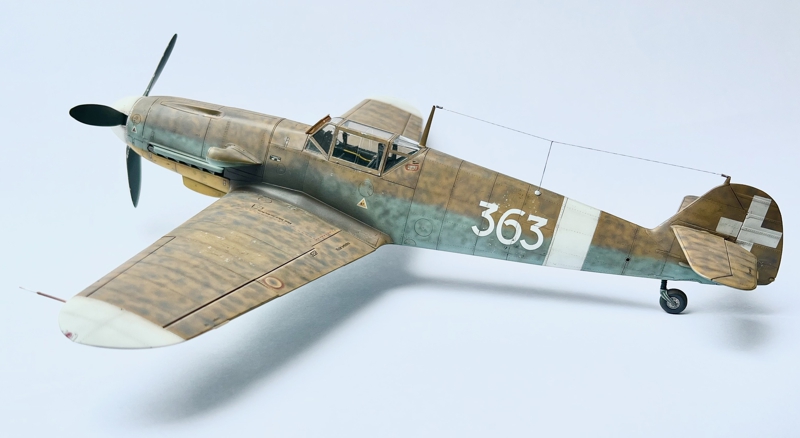
All stencils are HGW wet transfers - and they worked just great. The rest of the markings are painted with an airbrush. Panel lines have been accented with Tamiya Panel Line dark brown. Finally, all kit has been airbrushed with a delicate mist of Light Dust Ammo Mig filter.
And here it is - an old war-weary Messerschmitt Bf-109F-4 - as pictured with Lieutenant Antonio Camaioni at the controls.
I hope you like it!
© Bogdan Zajączkowski 2024
This article was published on Friday, February 23 2024; Last modified on Sunday, February 25 2024

